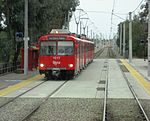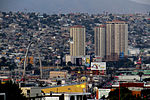San Ysidro McDonald's massacre
1980s crimes in California1984 in California1984 mass shootings in the United States1984 murders in the United StatesAttacks on buildings and structures in California ... and 13 more
Attacks on restaurants in North AmericaDeaths by firearm in CaliforniaHistory of McDonald'sJuly 1984 events in the United StatesMass murder in CaliforniaMass murder in the United StatesMass shootings in CaliforniaMass shootings in the United StatesMassacres in 1984Massacres in the United StatesMexican-American culture in San DiegoMurder in CaliforniaWikipedia pages semi-protected from banned users
The San Ysidro McDonald's massacre was an act of mass murder which occurred at a McDonald's restaurant in the San Ysidro neighborhood of San Diego, California, on July 18, 1984. The perpetrator, 41-year-old James Huberty, fatally shot 21 people and wounded 19 others before being killed by a police sniper approximately 77 minutes after he had first opened fire.At the time, the massacre was the deadliest mass shooting by a lone gunman in U.S. history, being surpassed seven years later by the Luby's shooting. It remains the deadliest mass shooting in California's history.
Excerpt from the Wikipedia article San Ysidro McDonald's massacre (License: CC BY-SA 3.0, Authors).San Ysidro McDonald's massacre
West San Ysidro Boulevard, San Diego San Ysidro
Geographical coordinates (GPS) Address Phone number Website Nearby Places Show on map
Geographical coordinates (GPS)
| Latitude | Longitude |
|---|---|
| N 32.555888888889 ° | E -117.05416666667 ° |
Address
Southwestern College Higher Education Center at San Ysidro
West San Ysidro Boulevard 460
92173 San Diego, San Ysidro
California, United States
Open on Google Maps









